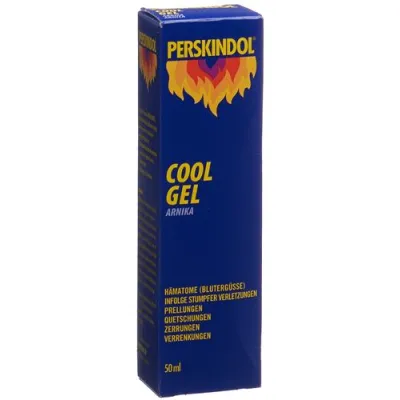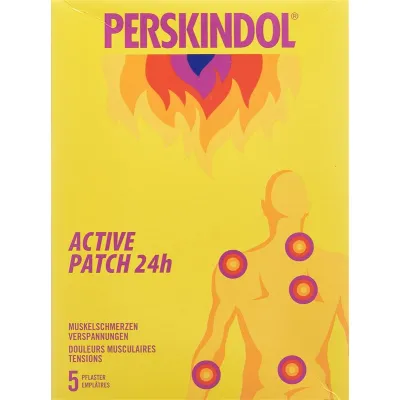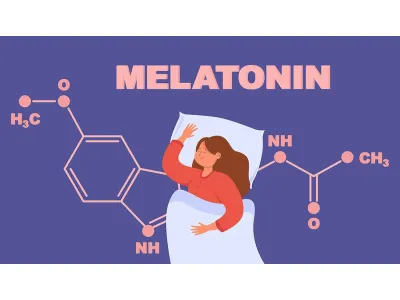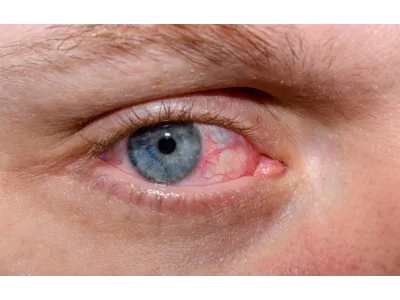Effective Ways to Reduce Swelling and Heal Hematomas from Sprains and Bruises
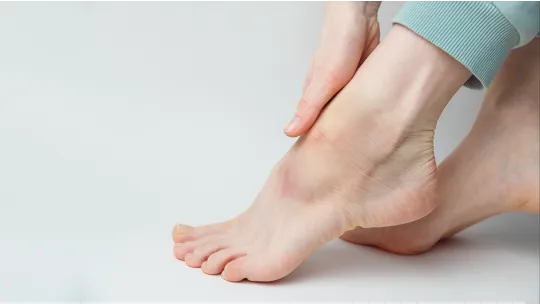
Injuries such as sprains and bruises are common, affecting people of all ages and activity levels. Such injuries often lead to swelling and formation of hematomas (bruises), as blood vessels are damaged and fluid accumulates in the affected area. Early intervention will help reduce pain, control inflammation and support the healing process, allowing for a quicker return to normal activities.
Swelling and Hematomas After Injuries
What Are Hematomas?
A hematoma is formed when blood vessels are damaged, causing blood to leak out and collect under the skin, forming bruises and hematomas. This collection of blood can vary in size and color depending on the severity of the vessel damage. Hematomas appear as a result of the body's response to injury and may take time to heal, gradually changing color from red to purple, blue, green, and finally yellow as the blood is reabsorbed.
The degree of hematoma depends on various factors, such as age, general health, the location of the injury and the force of the blow. Older people or those with certain health problems, such as blood clotting disorders, may experience larger or more severe hematomas. Also, areas of the body with less muscle and fat, such as the lower leg, may bruise more prominently.
The body's reaction to tissue damage: swelling
Edema is the body's natural protective response to injury, as it limits the spread of inflammation and promotes healing. When tissues are damaged, the immune system sends fluid containing white blood cells and proteins to the affected region to restore the harm. This accumulation of fluid causes swelling of the encompassing tissues.
Why swelling can be painful
Accumulation of fluid in the broken location puts pressure at the nerve endings, which leads to discomfort and pain. In addition, the inflammatory reaction can release chemicals that irritate nerve fibers, further exacerbating the sensation of pain. Effective management of edema is essential to reduce discomfort and promote restoration.
Home Remedies for Reducing Swelling and Treating Hematomas
The RICE Method
The RICE technique (relaxation, ice, compression, elevation) is a widely encouraged approach for treating swelling and hematomas. Here's a detailed overview of how it works:
- Rest: Limiting physical activity could be very essential to reduce pressure at the injured place. Giving the affected tissue time to relaxation prevents further damage and allows the body's natural healing methods to arise. Avoiding unnecessary movement can help decrease swelling and ease aches.
- Ice: Applying ice is one of the simplest ways to lessen swelling and relieve ache. The low temperature causes blood vessels to constrict, which limits blood flow to the injured vicinity and facilitates lessening inflammation. It is recommended to use an ice pack wrapped in a cloth to the affected location for 15-20 minutes every 1-2 hours for the first 48 hours after the harm. Avoid applying ice directly to the skin to prevent frostbite.
- Compression: Using an elastic bandage to apply gentle pressure to the damage can help prevent excessive swelling. Compression should be tight, but no longer so strong as to purpose pain or restriction blood waft.
- Elevation: Elevating the injured area above the level of the heart, if possible, lets in gravity to help reduce fluid accumulation. For example, putting a sprained ankle on a pillow can assist reduce swelling and speed recovery.
The RICE technique is powerful in the early tiers of injury treatment and can be combined with different remedies consisting of pain-relieving ointments or gentle massage to improve outcomes.
Arnica Ointments
Arnica is a famous natural treatment for inflammation and bruising. It incorporates compounds that assist lessen swelling, enhance blood move in the affected region, and promote recovery of broken tissue. Applying arnica ointment to the injured vicinity can help absorption of blood that has amassed beneath the skin, which means accelerate the recovery of hematomas. Perskindol Cool Gel, a cooling gel with arnica, used to treat injured, sore and tired muscle tissues. It is effortlessly applied to the skin and quickly cools the muscle tissue and promotes their regeneration. Perskindol gel is best used several times a day, but should not be applied to open wounds or damaged skin.
Perskindol cool arnica gel tube 50 ml
What is Perskindol Cool Gel Arnica and when is it used? Perskindol Cool Gel Arnica is a locally effective, externally applied drug. The active ingredients in Perskindol Cool Gel Arnica are quickly absorbed by the skin and have a direct effect on the underlying tissue and joint areas. When should Perskindol Cool Gel Arnica not be used or only with caution? In case of known hypersensitivity to one of the ingredients (see composition). Tell your doctor, pharmacist or druggist if you: suffer from other diseaseshave allergies (arnica allergy)apply other medications, including home-bought, topically (locally) or systemically. Can Perskindol Cool Gel Arnica be used during pregnancy or while breastfeeding? Based on previous experience, there is no known risk for the child when used as intended. How do you use Perskindol Cool Gel Arnica? Adults and children from 3 years.Unless otherwise prescribed, apply the gel in a thin layer (a 3 to 5 cm strip depending on the extent of the painful area) and massage in. What side effects can Perskindol Cool Gel Arnica have? The following side effects can occur when using PERSKINDOL Cool Gel Arnica: Slight itching, reddening or burning of the skin can occasionally occur. What should also be noted? Store at room temperature (15-25°C) and out of the reach of children.Perskindol Cool Gel Arnica may only be used up to the date marked «EXP» on the container. What does Perskindol Cool Gel Arnica contain? 100 g gel contains 20 g arnica flower tincture, DEV 1:10, extraction agent: ethanol 61% (m/m), 5 g levomenthol. Registration Number 56033 (Swissmedic). Where can you get Perskindol? In pharmacies and drugstores, without medical prescription.Packs available: 50ml, 100ml. Marketing Authorization Holder VERFORA SA, CH-1752 Villars-sur-Glâne. ..
28.11 USD
Means With Menthol or Eucalyptus
Cooling arrangements containing menthol or eucalyptus offer instant pain relief and reduce swelling with a cooling sensation. These agents work by stimulating nerve endings, which quickly blocks the sensation of pain, and by promoting vasoconstriction, which facilitates lessening the accumulation of fluid within the tissues. They are especially useful in the initial stages of injury, when inflammation and pain are most pronounced. PERSKINDOL Patch with menthol and herbal ingredients facilitates relieve tension, as an example, inside the neck and shoulder location. It has an immediate cooling effect, thanks to which the sensation of ache is reduced. For best results, apply the patch to the affected vicinity as directed, usually once a day. The patch can stay in place for up to 24 hours.
Perskindol active patch
PERSKINDOL Active Patch by Perskindol is a revolutionary solution designed to offer effective pain relief and soothe muscle tensions. Manufactured by the renowned brand Perskindol, this patch acts as your personal, on-the-go pain relief solution. Features: Long-lasting effect: The PERSKINDOL Active Patch provides prolonged relief for up to 8 hours, ensuring you can go about your day without the constant reminder of muscle or joint pain. Easy to use: This patch is incredibly easy to apply - simply peel off the protective film and stick it onto the affected area. No need for messy creams or gels. Comfortable and discreet: Thanks to its thin, flexible design, the patch is discreet and comfortable to wear under clothing. Active Ingredients: The patch is infused with a unique formula that includes essential oils known for their pain-relieving and anti-inflammatory properties. Benefits: Pain relief: The patch provides targeted relief from muscle and joint pain, making it an ideal solution for athletes or individuals with physically-demanding jobs. Convenience: The PERSKINDOL Active Patch is portable and easy to use, allowing you to manage pain wherever you are. Safe to use: As a product of the trusted brand Perskindol, you can be assured of its safety and effectiveness. Use Cases: Post-workout recovery: The patch can be applied after workouts to help soothe sore muscles and speed up recovery. Work-related strain: If your job involves heavy lifting or repetitive movements, the patch can help manage pain and prevent further injury. Chronic pain management: For individuals with arthritis or chronic muscle pain, applying the patch can provide much-needed relief. With PERSKINDOL Active Patch, you can take control of your pain management and live a more comfortable, active life...
35.04 USD
Both arnica and cooling agents are powerful in relieving symptoms of swelling and bruising and may be used in conjunction with different remedies, such as the RICE method, to speed recovery.
Physiotherapy and Exercises for Recovery
Gradual introduction of movements to the injured area is crucial to avoid stiffness and promote recovery. It's usually encouraged to begin mild variety-of-movement exercises once the preliminary swelling and ache subsides, which can take anywhere from a few days to a week, depending on the severity of the damage. By starting with mild, controlled movements, you could restore flexibility and prevent the accumulation of scar tissue.
When to start moving the broken area
The right time to start moving an injured body part depends on the character of the injury and the individual's progress in recuperation. It is vital to apply a gradual method and it's far really helpful to comply with the recommendation of a medical professional or physiotherapist. For minor injuries, light exercising can generally be begun after some days of relaxation. In the case of more critical injuries, physical therapy should be carried out by an expert who can assess the state of the harm and recommend the best time table of mobility exercises.
Physiotherapy methods
Methods such as manual therapy (gentle tissue manipulation), healing rub down, and ultrasound remedy help enhance blood movement, reduce muscle tension, and accelerate the healing manner. Electrical stimulation, another physical therapy technique, also can be used to stimulate muscle contractions and decrease pain inside the affected vicinity. Additionally, compression therapy and heat treatments can be administered to promote restoration and relieve discomfort.
Disclaimer: the article is informative and does not replace expert medical recommendation. Always seek advice from your physician before beginning treatment, particularly if you have a serious injury or persistent illness.
P. Kern

